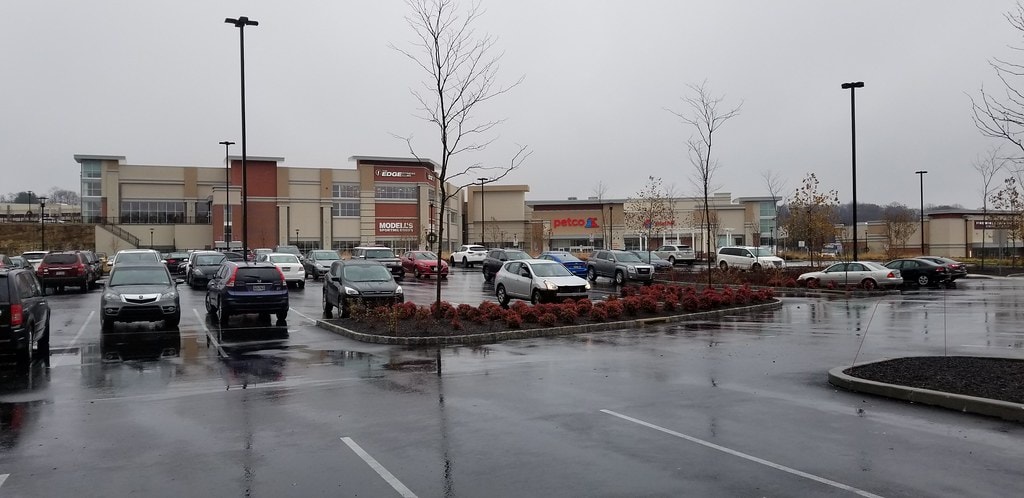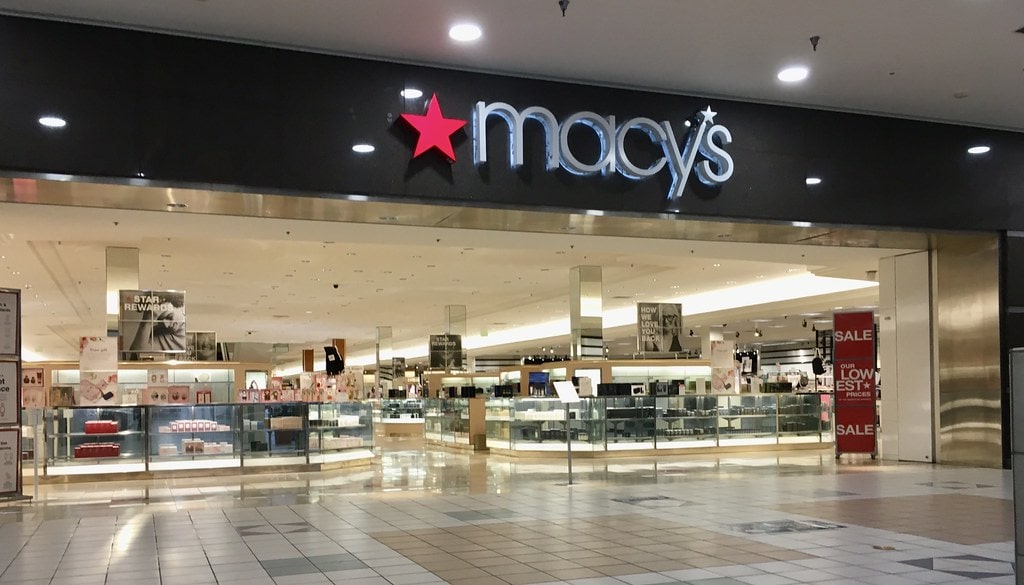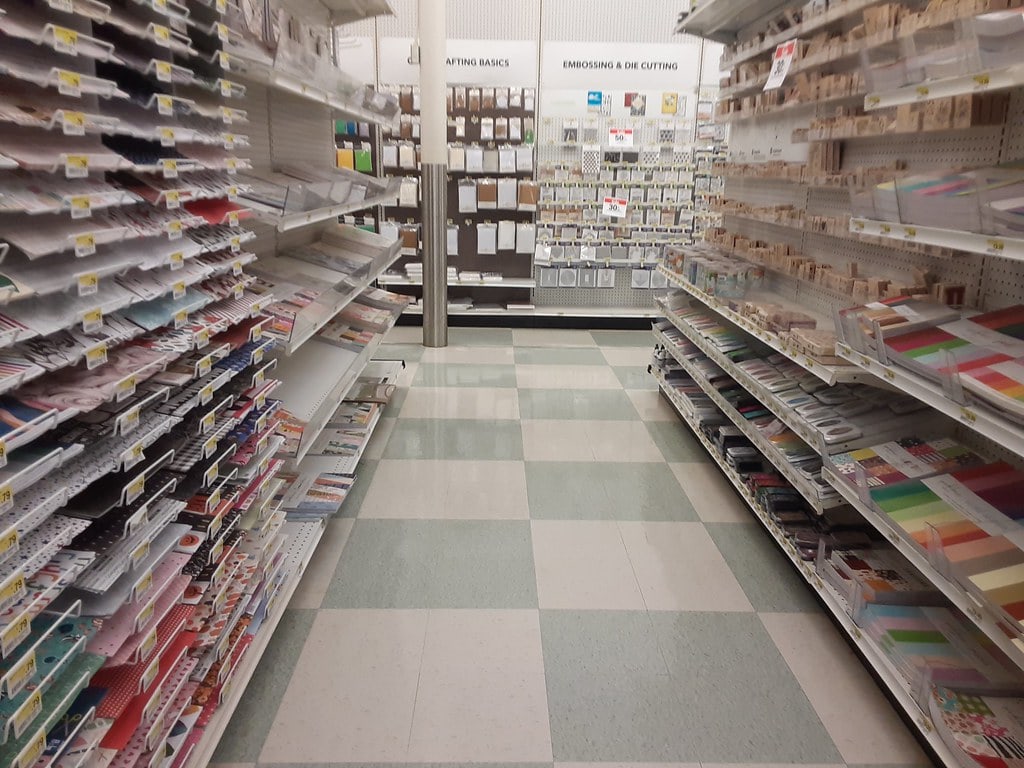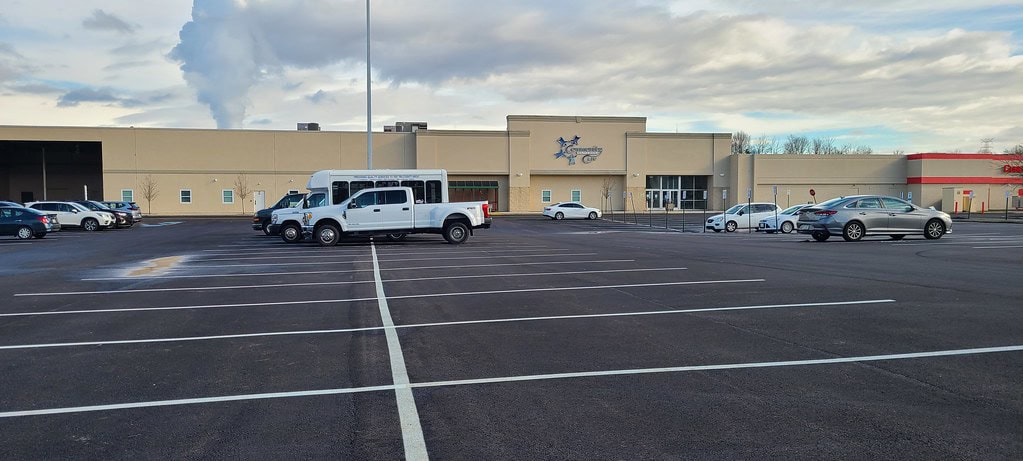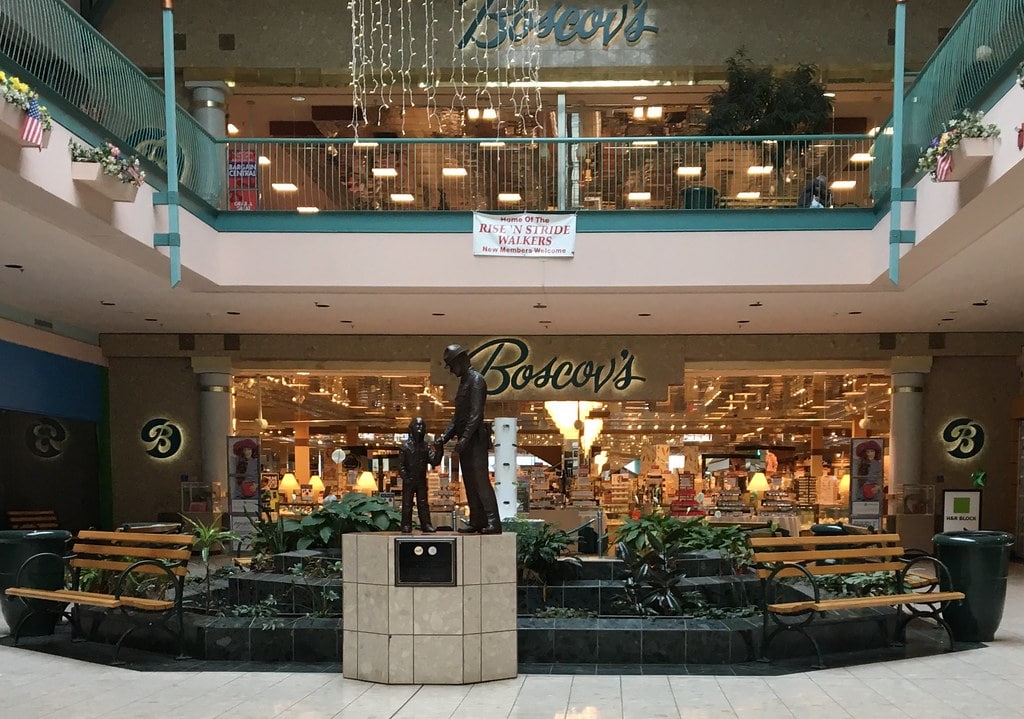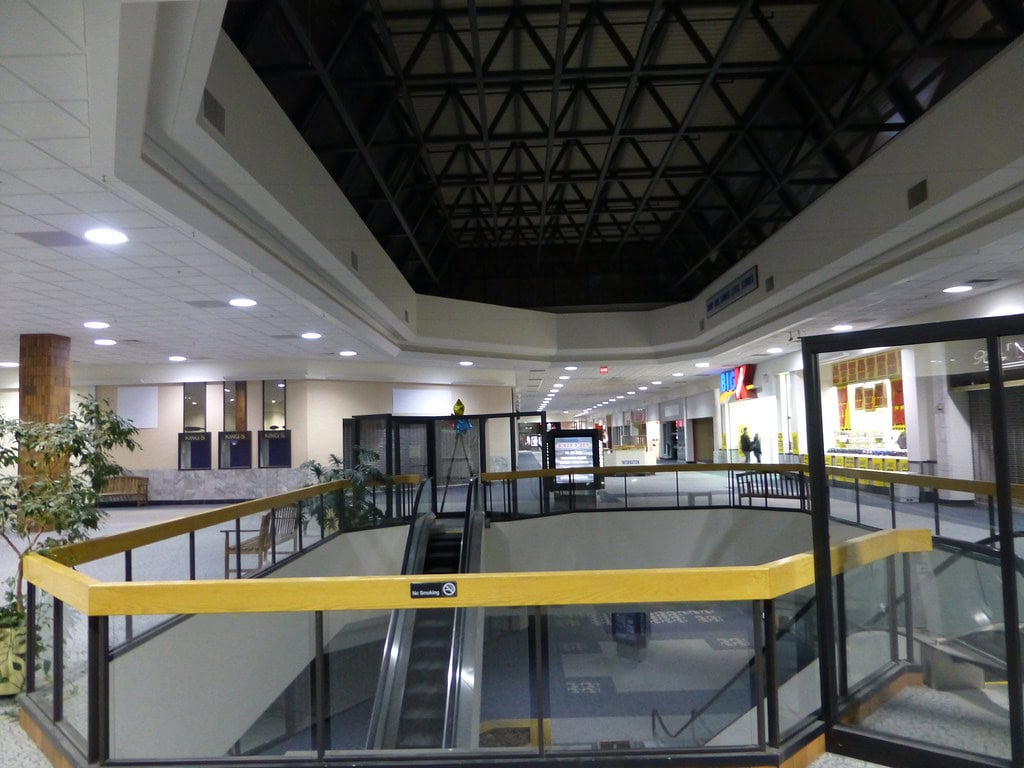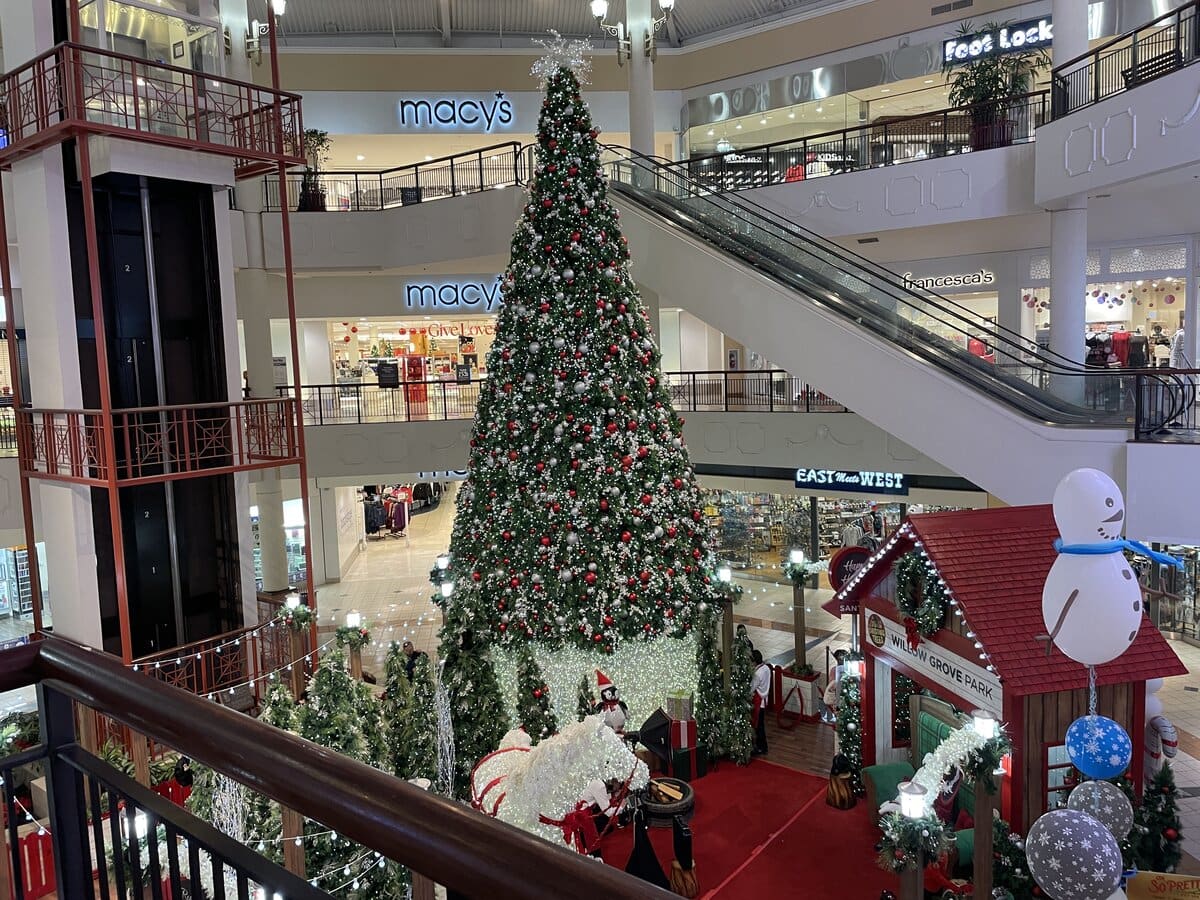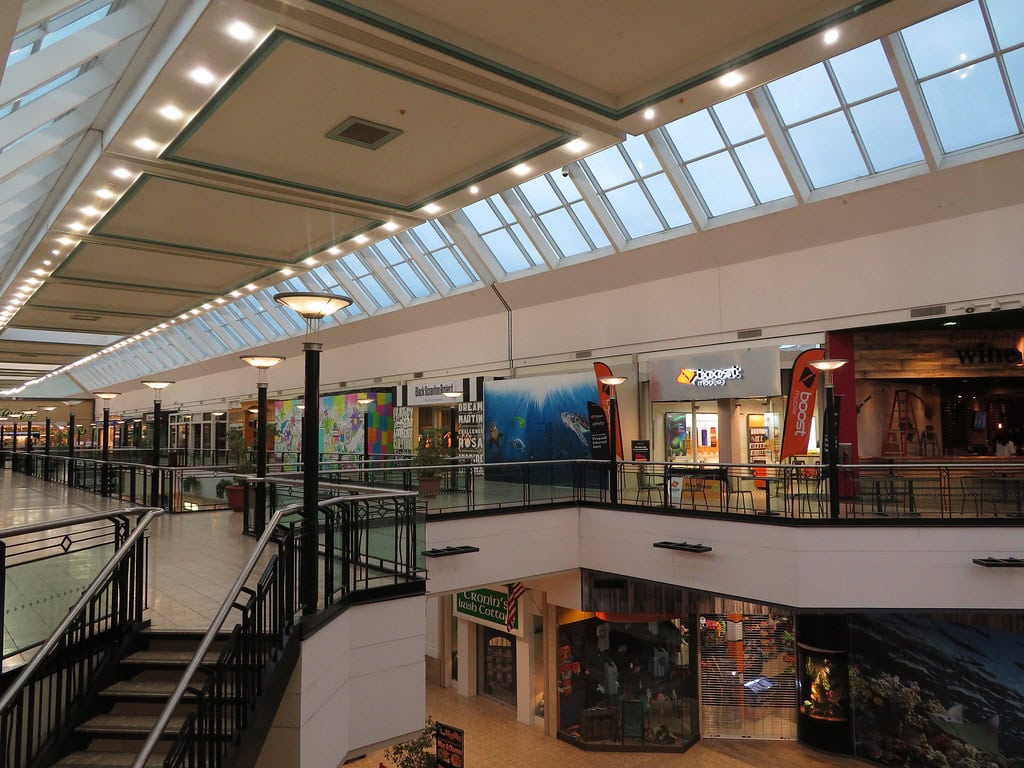Schuylkill Mall once pulled drivers off the highway into Frackville, Pennsylvania, for reasons that had little to do with fuel or food.
The parking lot stayed full through the 1980s, anchored by names like Hess's, Sears, and Kmart, which pulled in shoppers from smaller towns nearby.
On paper, it started as one of the largest malls in the state. In practice, it played a familiar role: a suburban stopover that seemed to promise permanence. That expectation would not last.
Retail Launch and Location Play (1980-1985)
Crown American opened the Schuylkill Mall on October 9, 1980, in Frackville, Pennsylvania.
The site sits near the intersection of Interstate 81 and Pennsylvania Route 61, a location selected for its vehicle access across Schuylkill County.
The building was single-level and contained 115 stores across 800,000 square feet.
Ninety-one stores were operational on opening day.
Three anchor tenants defined the early mix: Kmart, Hess's, and Sears.
Each offered a different type of draw. The Sears store replaced its older location in nearby Pottsville, tripling its floor space in the process.
The Kmart opened with a home improvement section, which was uncommon among Kmart locations at the time.
Hess's had a large footprint and a split-store layout, and its dedicated furniture section took up considerable space.
Several national chains operated at launch.
There was a Rea & Derick pharmacy, a prototype McCrory variety store, and a Weis Markets grocery store on an outparcel.
Two McDonald's restaurants operated simultaneously, one inside the mall and another in the parking lot.
The original design included space reserved for a possible fourth anchor, and JCPenney was involved in early negotiations.
By late 1983, Pomeroy's had relocated from downtown Pottsville and filled that open anchor spot.
That addition expanded the mall's draw even more, contributing to what, at the time, passed for a central retail corridor in Schuylkill County.
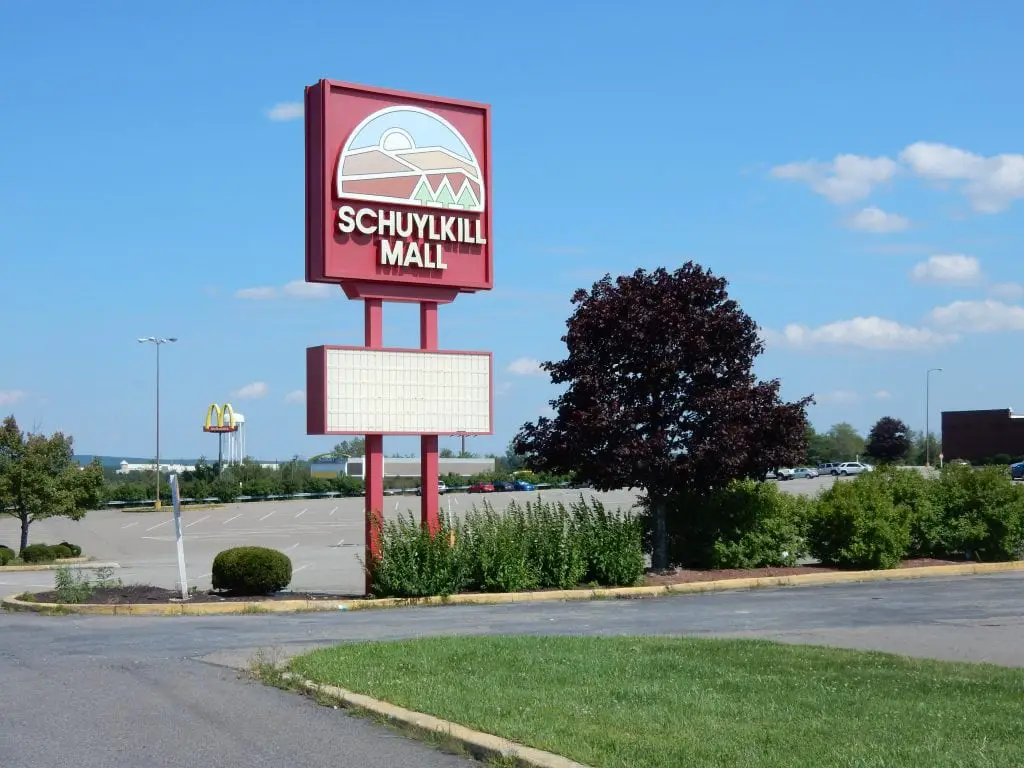
Anchor Shifts and Square Footage Gains (1986-1995)
The late 1980s and early 1990s brought several reshuffles to Schuylkill Mall's tenant mix, mostly involving its largest spaces.
By 1987, The Bon-Ton had purchased the Pomeroy's chain, inheriting the Frackville location and keeping operations steady for the next two decades.
Phar-Mor arrived in 1991, becoming the mall's fifth anchor.
Its discount drugstore model fit the early '90s shift in retail - less department store polish, more bulk value.
The space helped shore up the east side of the property.
Sears expanded its footprint in 1995, absorbing 23,000 square feet of previously vacant space and extending deeper into the mall.
The same year, Hess's closed its location. That exit followed broader downsizing across the chain and left one of the original anchors vacant.
Shortly after Hess's left, U.S. Factory Outlets opened in the space.
It operated with a stripped-down model - large lots of inventory, little decor, and fast turnover.
That space became a revolving door in the years ahead, but the first transition marked a shift away from department-store formality.
While the original anchors launched with decor and floor plans built to impress, the replacements - Phar-Mor and outlet stores - arrived with far less pretense.
Tenants filled square footage, but the architectural focus tilted toward utility.
Vacancy Cycles and Leasing Gaps (1996-2010)
By the mid-1990s, the mall had entered a slow churn.
U.S. Factory Outlets shuttered within a few years of opening.
Its departure left the old Hess's space vacant again until Black Diamond Antiques moved in.
That store later shifted to the former Phar-Mor location after Phar-Mor collapsed in 2002.
By 1998, Rex TV & Appliance had signed a lease.
The electronics retailer filled one of the mid-sized units off the central corridor.
It stayed through most of the 2000s, even as surrounding tenants began to exit.
Steve & Barry's opened in October 2007 in the former Hess's/Famous Labels corridor.
It offered low-cost collegiate gear and casual wear.
Two years later, that chain filed for bankruptcy and vacated the space.
Famous Labels opened afterward and ran until May 2011.
That same section of the mall changed hands repeatedly with little tenant retention.
Several small chains exited during this period. Chick-fil-A closed its location in 2009, and Gap, one of the original tenants, pulled out in early 2012.
The arcade near the original theater was shut down around 2011 to make room for theater expansion.
Hallmark Gold Crown, in operation since the mall's 1980 opening, closed in February 2014.
Storefront leasing fell into short-term cycles.
Businesses like Totally Twisted Pretzel Bakery moved in after Auntie Anne's left in February 2013, but these tenants often operated for only a few years.
The leasing office filled gaps, but turnover rates kept increasing.
Anchor spaces were empty more often than they were occupied.
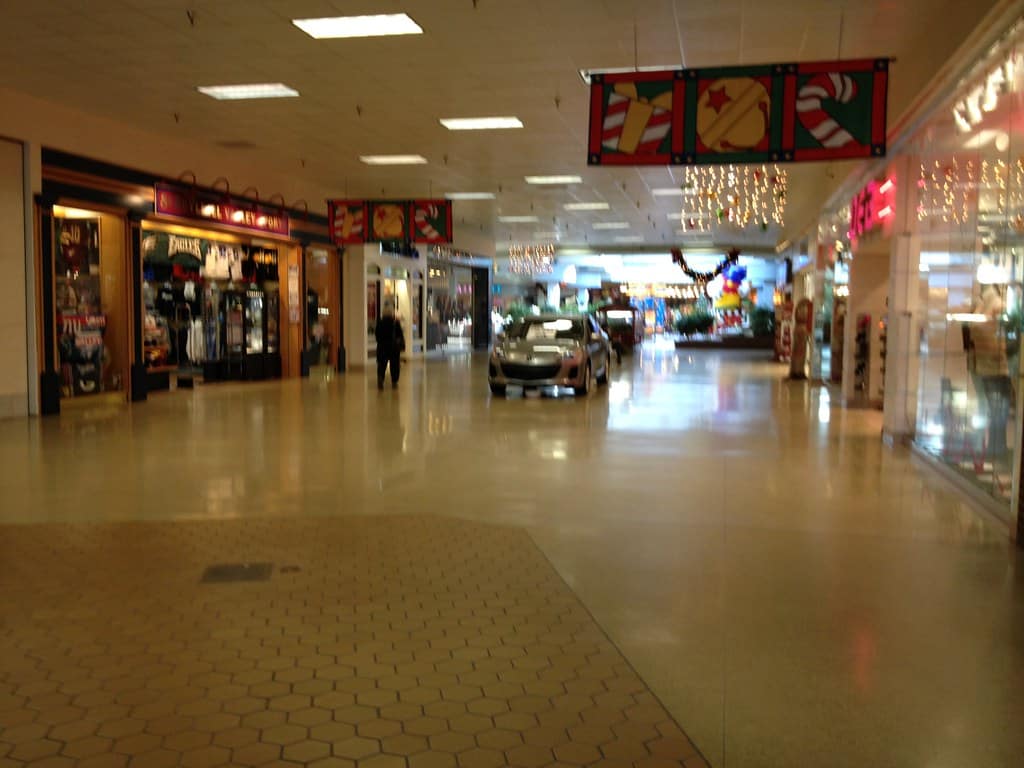
Schuylkill Mall Theatres and the Last Upgrade Push (2010-2018)
Kings Theater Circuit moved fast after the Regal Theater at Schuylkill Mall went dark in October 2010.
They bought the space and promised a full overhaul, aiming to drag the old 1980s theater into a new era. From 2010 through 2013, workers gutted and rebuilt nearly every piece of it.
The changes were sweeping. Four more screens, bringing the total to eight, all with stadium seating, were added.
They swapped out old projectors for a digital system, installed a 20,000-watt sound setup, stretched the movie screens bigger, and stripped the dated walls down to the studs.
New carpeting, fresh wall coverings, and a redesigned entrance gave the space a cleaner, sharper edge.
The Screening Room changed the game. Tucked inside the theater, it offered leather seats, a full bar, and a kitchen with space for 50 diners.
Only patrons 21 and older were allowed through the doors, carving out a quieter, more exclusive corner inside the mall.
They also installed a screen built for spectacle - about 35 feet wide and 40 feet tall - giving the mall a rough version of the IMAX experience without the branding.
Even the lobby and concessions were rebuilt from the ground up, a last attempt to keep moviegoers coming.
The upgrades gave Pearl Stadium 8 a few extra years of life. But when January 15, 2018, arrived, the theater closed for good, the final tenant to leave Schuylkill Mall behind.
Lease Terminations and Final Store Closures (2011-2018)
By 2011, Schuylkill Mall was relying more on quick-fill leases than long-term commitments.
Dunham's Sports signed a lease in November 2011, setting up shop in the old Phar-Mor space.
That opening in September 2012 temporarily restored a large retailer to the property, but the pattern of short-lived operations continued elsewhere.
Sears announced the closure of its 112,000-square-foot store in October 2014.
Kmart, one of the original anchors, followed with its exit announcement in February 2015.
The Bon-Ton, the last traditional department store in the mall, declared its closure in March 2017, targeting a final business day of May 1, 2017.
After those departures, leasing efforts largely shifted toward maintenance rather than expansion.
Dunham's Sports closed its doors on December 31, 2017.
The chain relocated to Fairlane Village Mall in Pottsville, reopening there on December 7, 2018.
Mall ownership changed hands during this period. Northpoint Development LLC purchased the property in March 2017 for $2.1 million.
Stores were issued a 90-day vacate notice on May 9, 2017.
By the start of 2018, retail operations had fully ceased.
No redevelopment work started while tenants still occupied the structure, giving the property a stripped, vacant look during its final months.

Sale Contracts and Demolition Logistics (2018-2020)
Demolition at Schuylkill Mall kicked off on January 26, 2018, less than two weeks after the last theater closure.
Contractors began at the west end, where Sears once stood, using heavy machinery to bring down steel-framed sections first.
Removal then moved eastward toward the former Bon-Ton site.
Work at the east wing paused temporarily, leaving structures like the old Blum's Auction space standing while demolition continued elsewhere.
By March 10, 2018, only a few structures remained upright - sections near the former Kmart and the eastern outparcels.
Mall demolition was reported as completed by September 5, 2018.
Northpoint Development handled site control during the entire demolition period.
Their plans did not include retail replacements. Instead, the cleared acreage was marketed for industrial redevelopment.
By late 2019 into early 2020, construction began on a Clayco industrial warehouse, replacing the mall footprint with modern logistics space.
The redevelopment followed a model seen in other parts of Pennsylvania: older retail properties converted into supply-chain hubs tied to highway access.
After the first round of concrete pours, no traces of anchor stores, food courts, or movie screens remained at Schuylkill Mall's former address, 830 Schuylkill Mall Road.
All leasing discussions shifted from storefront square footage to warehouse bay dimensions, marking a full reset for the property.
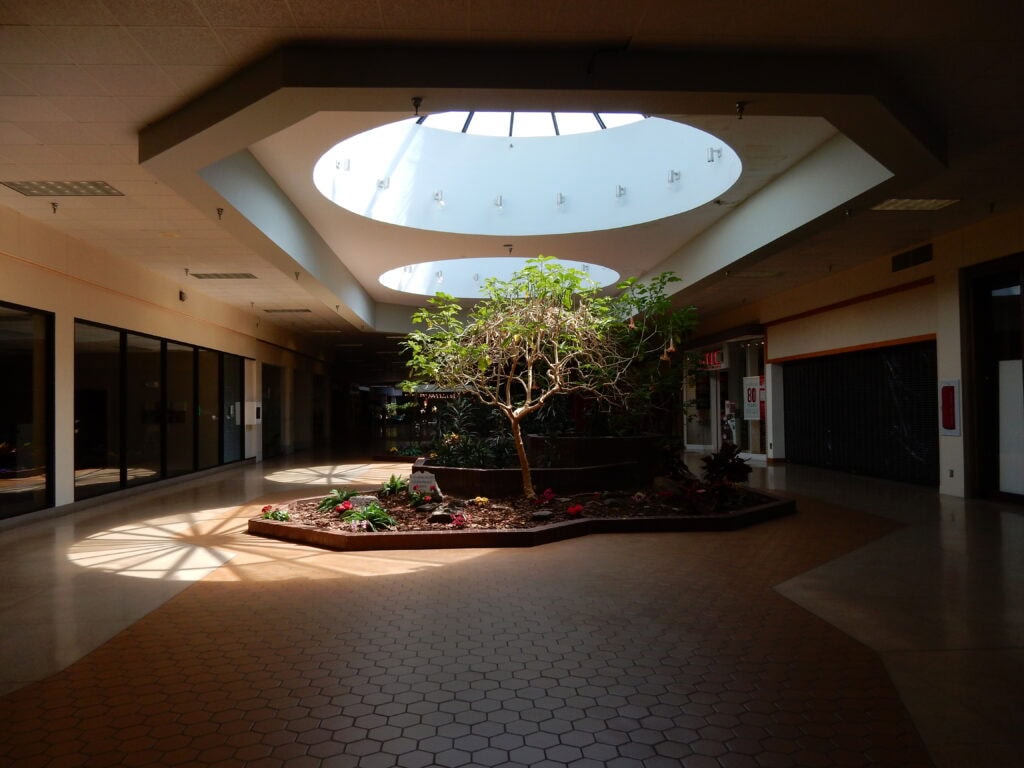
🍀

